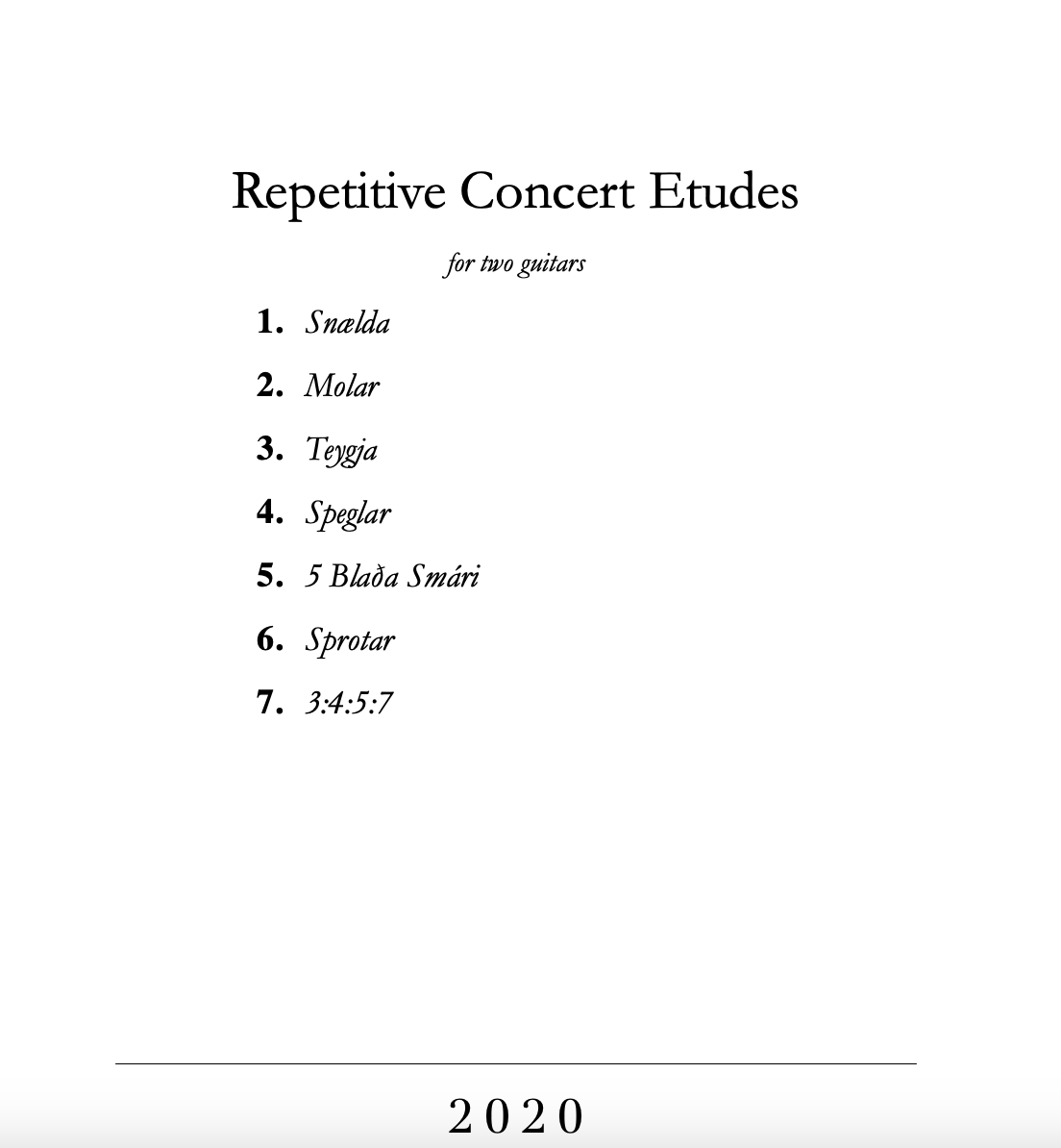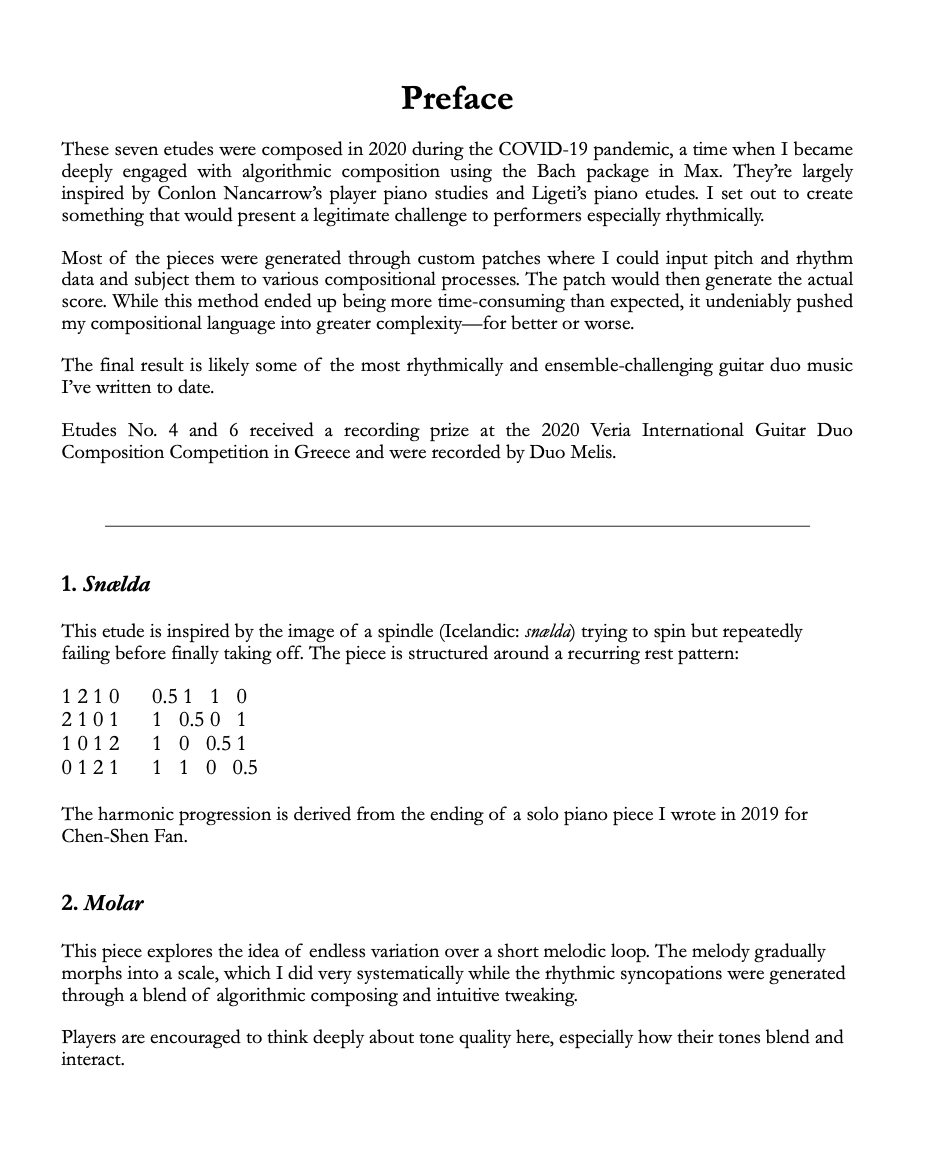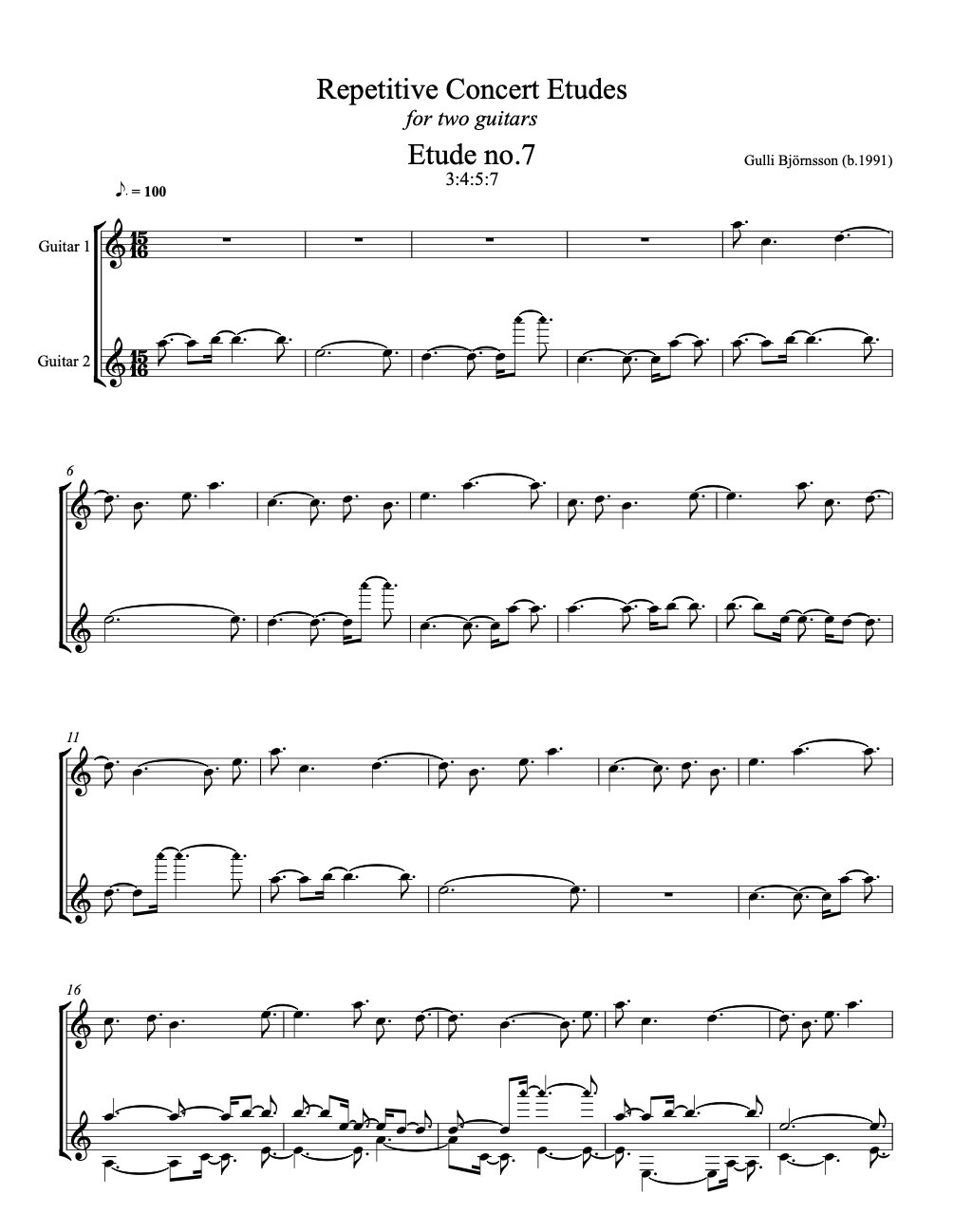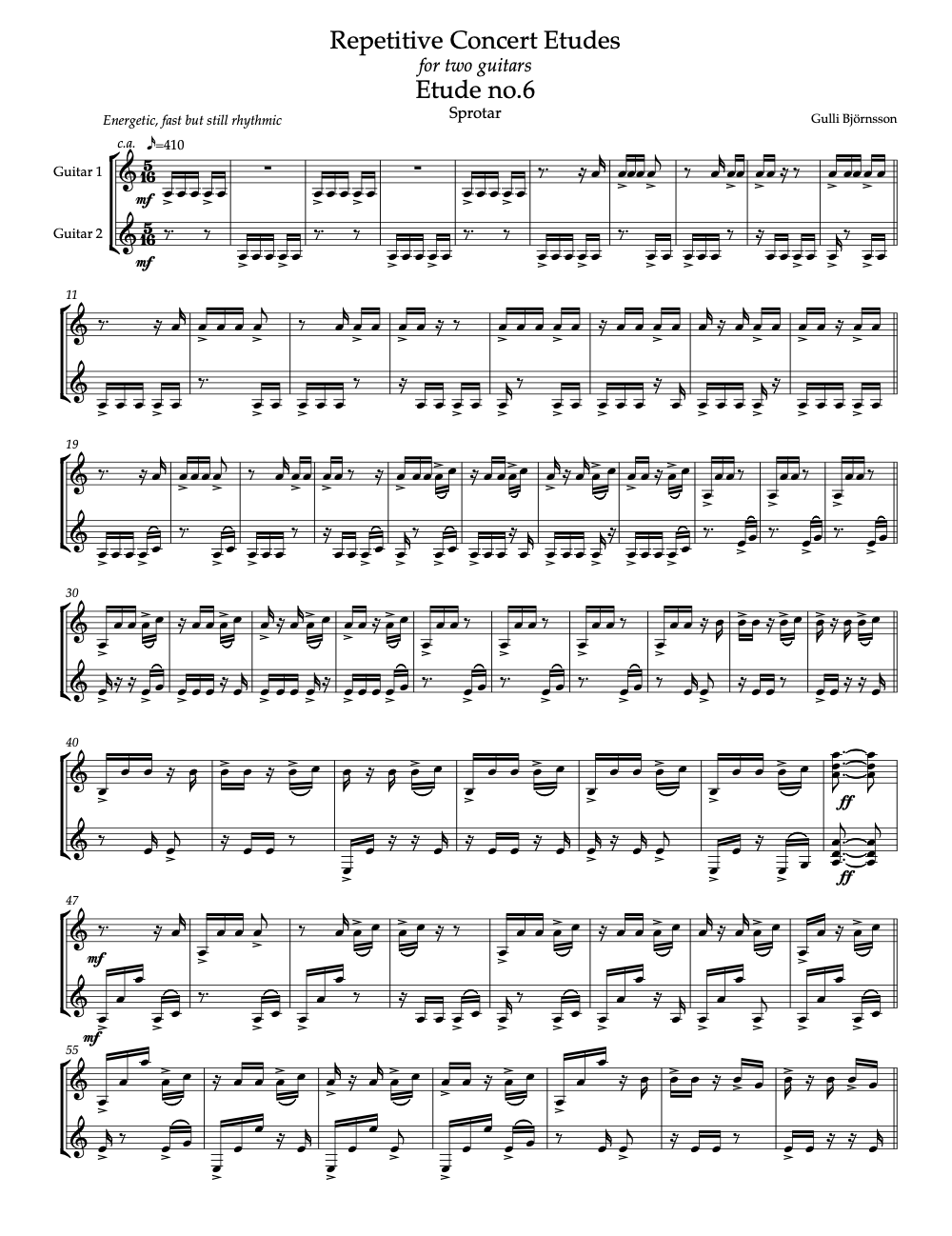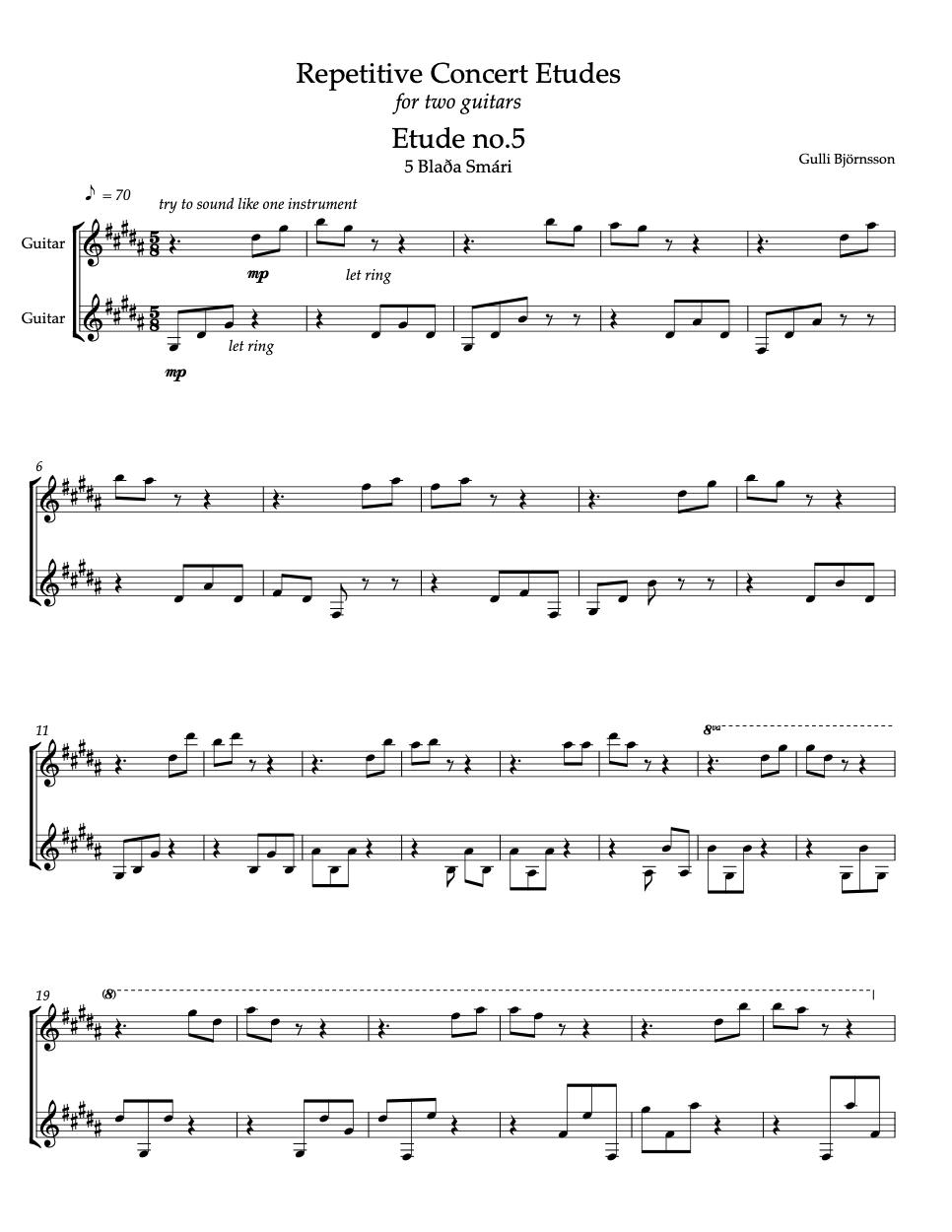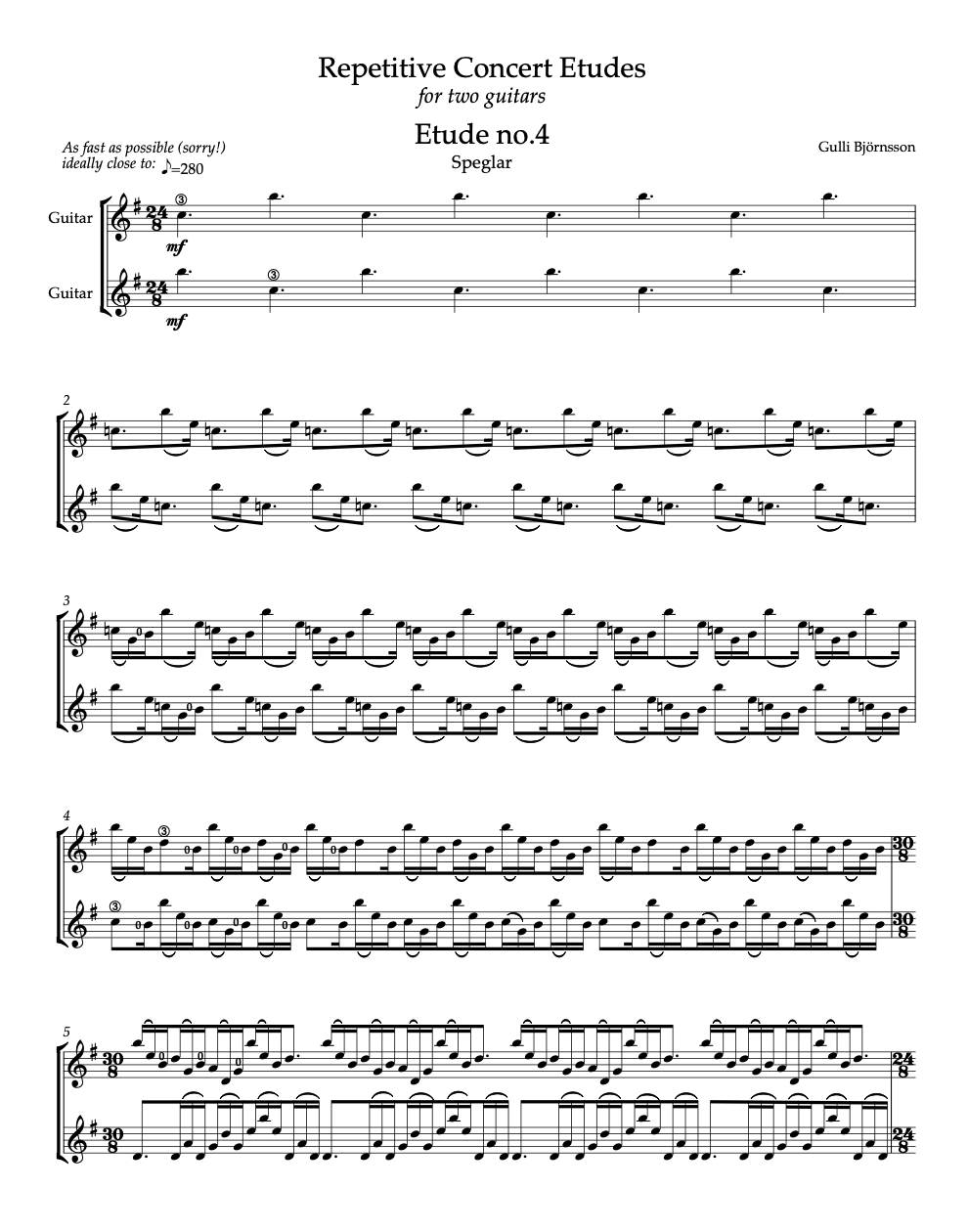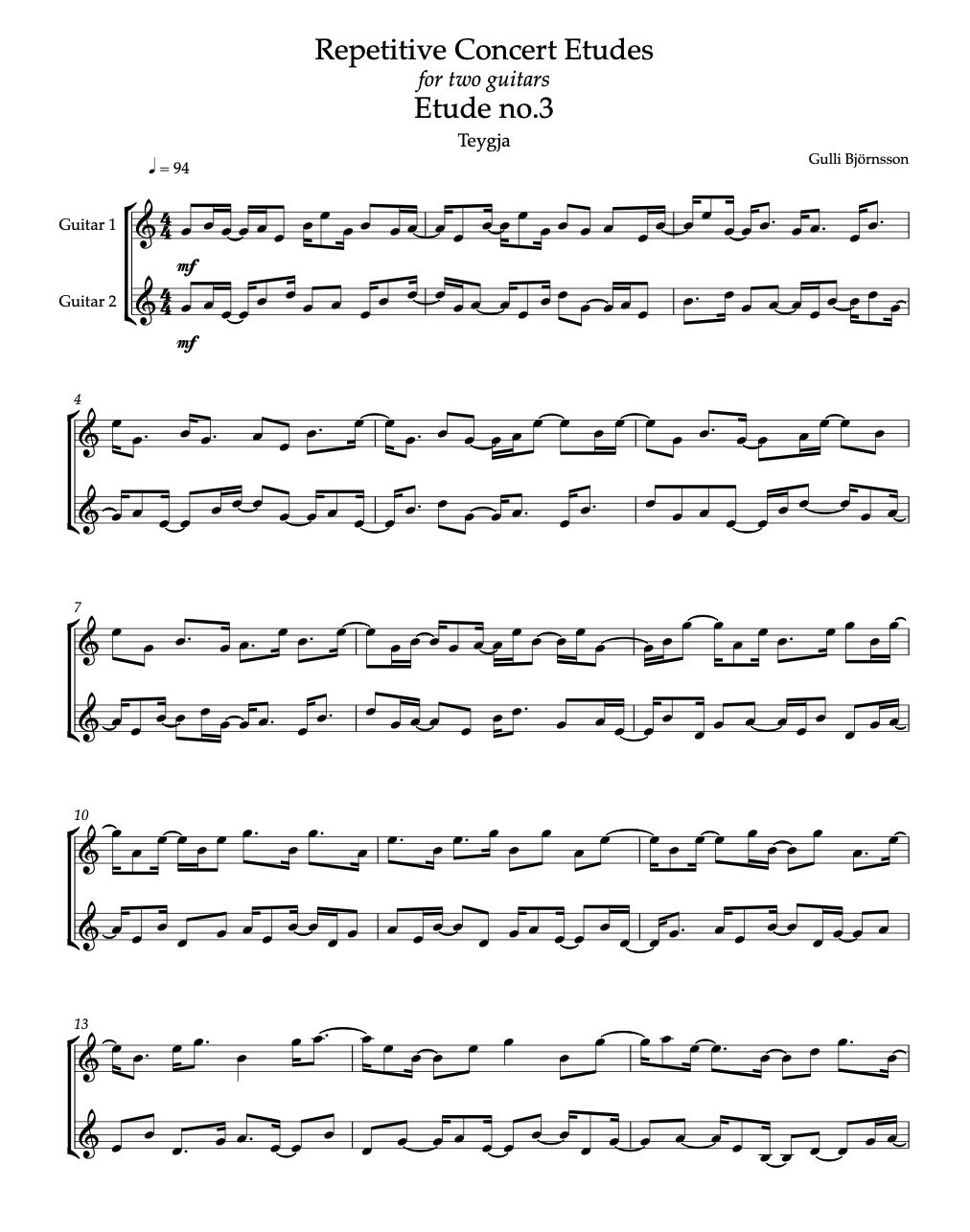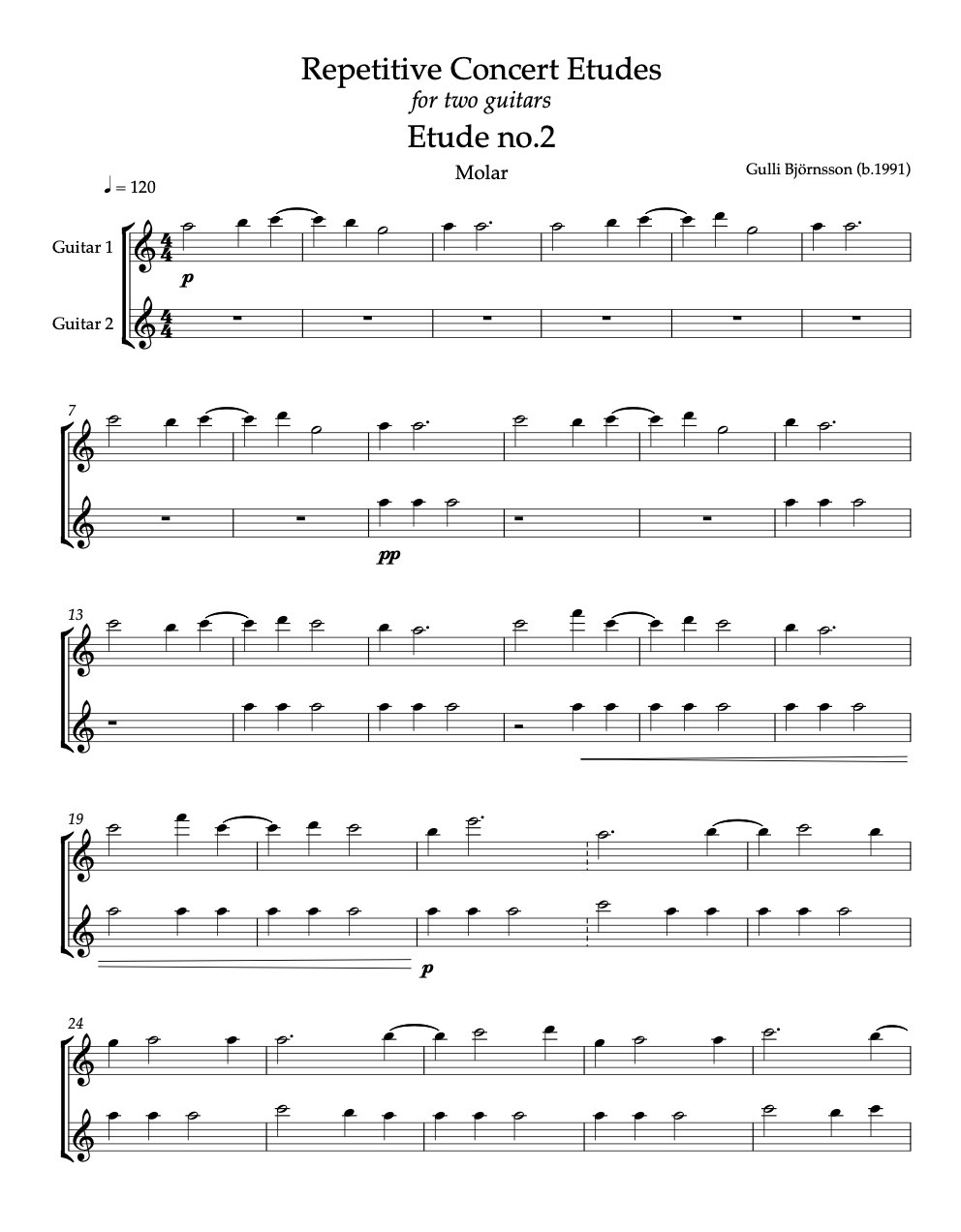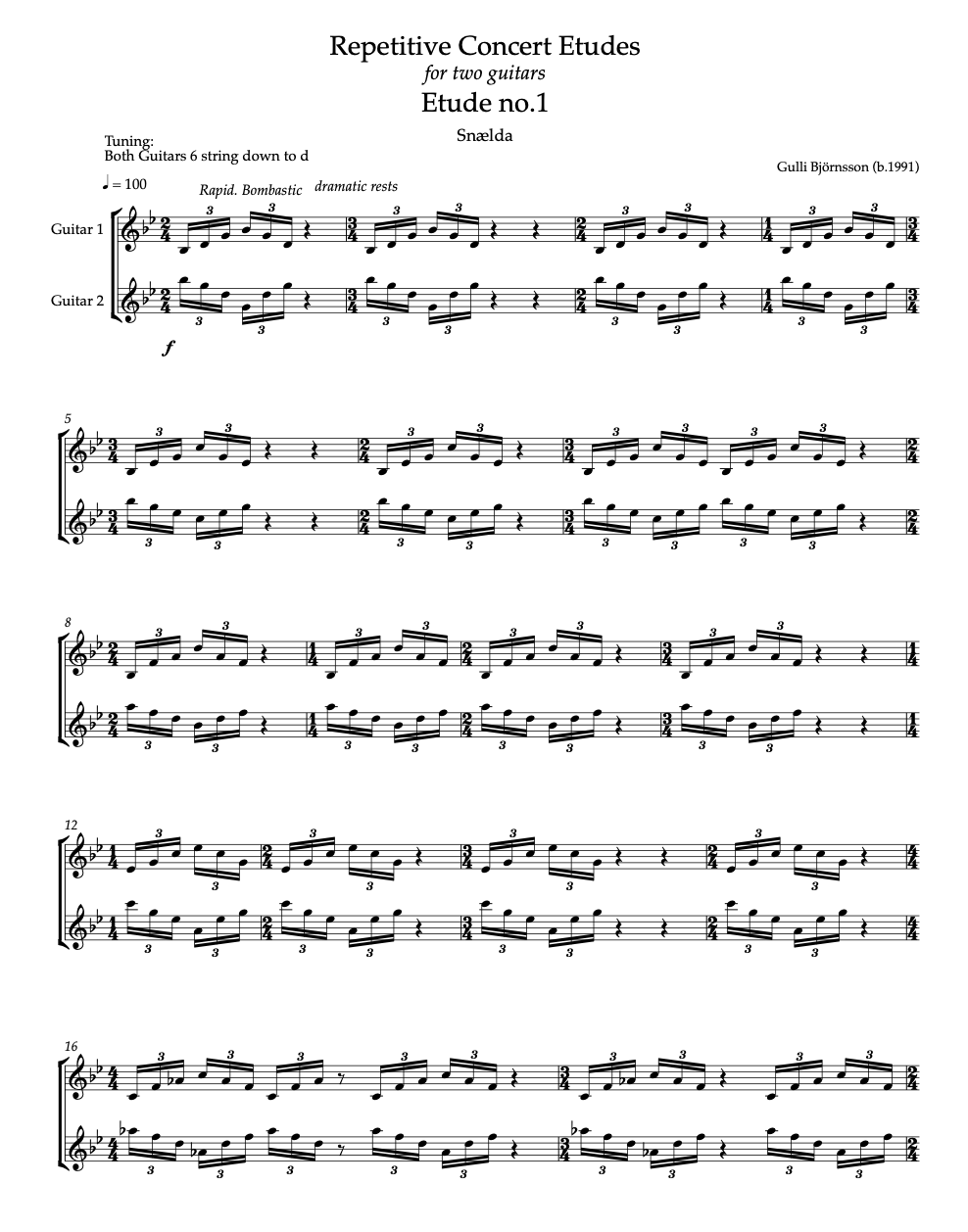Repetitive Concert Etudes - for Two Guitars
Preface
These seven etudes were composed in 2020 during the COVID-19 pandemic, a time when I became
deeply engaged with algorithmic composition using the Bach package in Max. They’re largely
inspired by Conlon Nancarrow’s player piano studies and Ligeti’s piano etudes. I set out to create
something that would present a legitimate challenge to performers especially rhythmically.
Most of the pieces were generated through custom patches where I could input pitch and rhythm
data and subject them to various compositional processes. The patch would then generate the actual
score. While this method ended up being more time-consuming than expected, it undeniably pushed
my compositional language into greater complexity—for better or worse.
The final result is likely some of the most rhythmically and ensemble-challenging guitar duo music
I’ve written to date.
Etudes No. 4 and 6 received a recording prize at the 2020 Veria International Guitar Duo
Composition Competition in Greece and were recorded by Duo Melis.
1. Snælda
This etude is inspired by the image of a spindle (Icelandic: snælda) trying to spin but repeatedly
failing before finally taking off. The piece is structured around a recurring rest pattern:
1 2 1 0 0.5 1 1 0
2 1 0 1 1 0.5 0 1
1 0 1 2 1 0 0.5 1
0 1 2 1 1 1 0 0.5
The harmonic progression is derived from the ending of a solo piano piece I wrote in 2019 for
Chen-Shen Fan.
2. Molar
This piece explores the idea of endless variation over a short melodic loop. The melody gradually
morphs into a scale, which I did very systematically while the rhythmic syncopations were generated
through a blend of algorithmic composing and intuitive tweaking.
Players are encouraged to think deeply about tone quality here, especially how their tones blend and
interact.
3. Teygja
This etude was inspired by a theory paper by Richard Cohn on beat-class sets in the music of Steve
Reich. Beat classes can be imagined as positions on a clock where beats land, emphasizing spatial
relationships over absolute time. This concept relates closely to Euclidean rhythms.
Here, pitch loops are assigned to Euclidean rhythms / beat classes and subjected to percentage-
based accelerations and decelerations, but everything remains quantized to a 16th-note grid. This
creates layers of syncopation that evolve in unexpected ways.
It was a bit hard to notate this piece as both parts effectively exist in different meters throughout,
but I ultimately kept everything in 4/4 as a practical solution.
4. Speglar
This piece began as an improvisation. I wrote one part and then mirrored it to create the second
part. The result is a quirky but tightly interlocked counterpoint.
5. 5 Blaða Smári
Inspired by Arvo Pärt’s organ music, I wondered if two guitars could be blended to sound like a
single, composite instrument. As a constraint, I kept the piece in 5 throughout and aimed for a
continuous, flowing feel. This etude is much easier than the others, a little moment of respite for
both performers and listeners.
6. Sprotar
This etude I composed entirely on paper. The goal was to layer multiple rhythmic loops into a single,
unified rhythm. By superimposing many layers into one line, the original loop identities are masked,
resulting in a rhythmic texture that to me felt quite complex and unpredictable.
The other main idea here was to create hocketing strumming grooves between the two guitars.
I honestly don’t remember all the original patterns anymore, they’ve vanished into the final surface.
7. 3:4:5:7
Heavily inspired by Nancarrow’s use of temporal ratios, this piece uses four overlapping rhythmic
lines (two per player), each operating in a different ratio: 3, 4, 5, or 7. These ratios phase against
melodic loops of differing lengths, creating quite intricate rhythmic interactions.
Though it may sound deceptively simple, this is one of the most technically difficult etudes to
perform in my opinion.
Here are some of the ratio structures used:3: 3 6 9 3
4: 8 4 12
5: 5 10 15 10
7: 7 21 14

